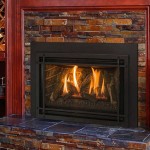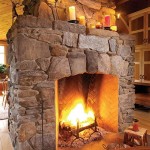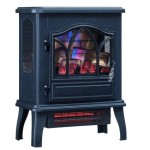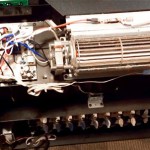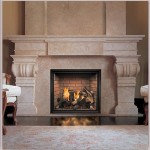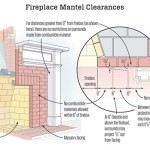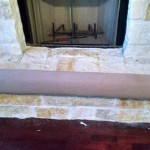Corner Fireplace Hearth Ideas: Optimizing Space and Style
A corner fireplace can be a striking architectural feature, transforming an unused angle into a focal point within a room. However, the unique placement often requires thoughtful design considerations, especially when it comes to the hearth. The hearth serves not only as a functional barrier against stray embers but also as an opportunity to enhance the fireplace's aesthetic appeal and integrate it seamlessly with the surrounding decor. This article will explore a variety of corner fireplace hearth ideas, focusing on materials, shapes, and design strategies to maximize both the practicality and visual impact of this essential element.
The hearth's primary function remains fire safety. Building codes typically mandate a specific hearth depth, extending beyond the fireplace opening to prevent accidental burns and protect flooring from potential damage. This depth varies depending on the type of fireplace, with wood-burning fireplaces generally requiring a more substantial hearth extension than gas or electric models. Before embarking on any hearth construction or renovation, consulting local building codes and regulations is paramount to ensure compliance and safety.
Beyond the safety requirements, the hearth presents a valuable design opportunity. It can be used to complement the fireplace's style, tie into the room's overall aesthetic, and even provide additional functional space. The following sections will delve into specific design ideas, categorized by key aspects such as material selection, shape variations, and integration strategies.
Material Selection: Balancing Aesthetics and Durability
The choice of material for a corner fireplace hearth significantly impacts its appearance, durability, and overall cost. A wide range of materials are available, each with its own unique characteristics and requiring different installation techniques. Some of the most popular options include stone, tile, brick, concrete, and even metal, each offering a distinct aesthetic and varying levels of heat resistance.
Stone: Natural stone, such as granite, marble, slate, and limestone, exudes timeless elegance and provides excellent heat resistance. Each stone type offers a different color palette and texture, allowing for customization to suit various design styles. Granite, known for its durability and resistance to scratches and stains, is a practical choice for high-traffic areas. Marble, with its veining and polished surface, evokes a sense of sophistication but requires more careful maintenance to prevent staining. Slate, with its rustic texture and dark hues, complements contemporary and industrial designs. Limestone provides a softer, more muted aesthetic. Stone hearths can be constructed from individual slabs or smaller tiles, depending on the desired look and budget. Installation typically requires professional expertise to ensure proper leveling and sealing.
Tile: Ceramic and porcelain tiles offer a versatile and cost-effective alternative to natural stone. Tiles are available in a vast array of colors, patterns, and sizes, allowing for endless design possibilities. They are also relatively easy to clean and maintain. Porcelain tiles, known for their durability and water resistance, are particularly well-suited for hearth applications. Consider the tile's PEI (Porcelain Enamel Institute) rating, which indicates its resistance to abrasion, when selecting tiles for a hearth. Higher PEI ratings signify greater durability. Tile installation, while potentially a DIY project, requires careful attention to detail to ensure proper grout lines and a level surface.
Brick: Brick hearths evoke a sense of warmth and tradition, complementing rustic and farmhouse-style interiors. Brick offers excellent heat retention, radiating warmth even after the fire has died down. Different types of brick are available, differing in color, texture, and size. Reclaimed brick, with its weathered appearance, adds character and history to a space. Brick can be laid in various patterns, such as herringbone or basketweave, to create visual interest. Mortar joints are crucial for structural integrity and should be carefully sealed to prevent moisture penetration. Professional installation is recommended for brick hearths, especially for complex patterns.
Concrete: Concrete hearths offer a modern and minimalist aesthetic. Concrete can be poured in place or precast, allowing for customization of shape, size, and finish. Polished concrete provides a sleek and sophisticated look, while exposed aggregate concrete offers a more textured and rustic appearance. Concrete can be stained or dyed to achieve a variety of colors. Sealing is essential to protect concrete from stains and damage. While concrete is durable, it can be susceptible to cracking if not properly reinforced and cured.
Metal: Metal hearths, typically made of steel or iron, offer a contemporary and industrial aesthetic. Metal is highly durable and heat resistant, making it a practical choice for modern fireplaces. Metal hearths can be custom fabricated to fit specific dimensions and design requirements. Consider the metal's finish, as some finishes may be prone to scratching or rusting. Regular cleaning is essential to maintain the metal's appearance. Professional fabrication and installation are recommended for metal hearths.
Shape Variations: Adapting to the Corner Space
The shape of a corner fireplace hearth can significantly impact its functionality and visual appeal. The hearth's shape should complement the fireplace's design and the overall layout of the room. Common hearth shapes for corner fireplaces include rectangular, triangular, curved, and custom shapes. Each shape offers different advantages and considerations.
Rectangular: A rectangular hearth is the most common and practical choice for corner fireplaces. It provides ample space for fire safety and can be easily integrated into various room layouts. The rectangle can be oriented parallel to either wall, creating a symmetrical or asymmetrical design. A rectangular hearth can also be extended to create a seating area or a platform for decorative objects. The simplicity of the rectangular shape makes it a versatile choice for a wide range of design styles.
Triangular: A triangular hearth is a natural fit for a corner fireplace, mirroring the angle of the walls. It creates a clean and symmetrical look, maximizing the available space in the corner. The size of the triangle can be adjusted to accommodate the fireplace's dimensions and the desired level of fire protection. A triangular hearth can be constructed from any of the materials discussed earlier, such as stone, tile, or brick. However, precise cutting and installation are crucial to ensure a seamless fit.
Curved: A curved hearth adds a touch of elegance and sophistication to a corner fireplace. The curve softens the angularity of the corner and creates a more inviting atmosphere. Curved hearths can be constructed from stone, tile, or concrete, but require more specialized fabrication and installation techniques. The radius of the curve should be carefully considered to ensure a balanced and harmonious design. A curved hearth can also be used to define a seating area or create a visual transition between different areas of the room.
Custom Shapes: For those seeking a truly unique and personalized look, custom-shaped hearths offer endless possibilities. These shapes can be designed to complement the fireplace's design or to create a focal point within the room. Custom shapes may involve intricate patterns, multiple levels, or integrated storage solutions. Careful planning and professional design assistance are essential to ensure that the custom shape is both aesthetically pleasing and functionally sound.
Integration Strategies: Blending the Hearth with the Room
The successful integration of a corner fireplace hearth requires careful consideration of its relationship to the surrounding elements, including the fireplace itself, the walls, the flooring, and the furniture. The hearth should not only be functional but also contribute to the overall aesthetic harmony of the room. Several strategies can be employed to achieve seamless integration, including matching materials, creating visual transitions, and incorporating functional elements.
Matching Materials: One way to create a cohesive look is to match the hearth's material to the fireplace surround or other architectural features in the room. For example, if the fireplace surround is made of brick, using the same brick for the hearth will create a unified and harmonious design. Similarly, if the room features natural stone accents, incorporating the same stone into the hearth will tie the elements together. While matching materials can create a sense of continuity, it's also important to consider contrast. Using a slightly different shade or texture of the same material can add visual interest without disrupting the overall harmony.
Creating Visual Transitions: The hearth can be used to create a visual transition between the fireplace and the surrounding flooring. This can be achieved by using a contrasting material or color to define the hearth as a distinct zone. For example, a dark stone hearth can be paired with light wood flooring to create a dramatic visual contrast. Alternatively, a gradual transition can be created by using a patterned tile or a gradient of colors. The transition should be subtle enough to avoid jarring the eye but distinct enough to define the hearth as a separate element.
Incorporating Functional Elements: The hearth can be more than just a fire safety barrier; it can also serve as a functional element within the room. For example, the hearth can be extended to create a seating area, providing additional space for relaxation and conversation. The hearth can also incorporate built-in storage for firewood, tools, or decorative items. Integrating functional elements into the hearth can maximize its utility and contribute to the overall efficiency of the room. Consider the specific needs and lifestyle of the occupants when designing functional elements for the hearth.
In conclusion, corner fireplace hearth ideas encompass a wide range of possibilities, limited only by imagination and budget. By carefully considering material selection, shape variations, and integration strategies, it is possible to create a hearth that is both functional and aesthetically pleasing, enhancing the beauty and comfort of any living space. Thoroughly researching local regulations is crucial to ensure the hearth is built to code and provides adequate fire safety.

Corner Fireplace Design Ideas S Remodel And Decor Living Room Makeover Home

Corner Fireplace Ideas Tags Diy Modern Home Design

Discover The 61 Best Corner Fireplace Designs In 2024 Stone Gas Electric

The Corner Gas Fireplace A Great Way To Maximize Your Space

12 Corner Fireplace Ideas Cozy Looks To Warm Up The Living Room Real Homes

59 Elegant Corner Fireplace Ideas Designs For Your Home 2024 Comfy Living Room Decor Remodel

How To Make A Corner Fireplace Mantel Look Good 15 Examples
Corner Fireplace Ideas
:max_bytes(150000):strip_icc()/Snapinsta.app_326387619_859325998678316_4739496989230390013_n_1080-59a0cb62b51448f78853cdef8c4140a1.jpg?strip=all)
25 Corner Fireplace Ideas To Make A Cozy Statement

Discover The 61 Best Corner Fireplace Designs In 2024 Living Room Decor Gas Comfy
Related Posts


